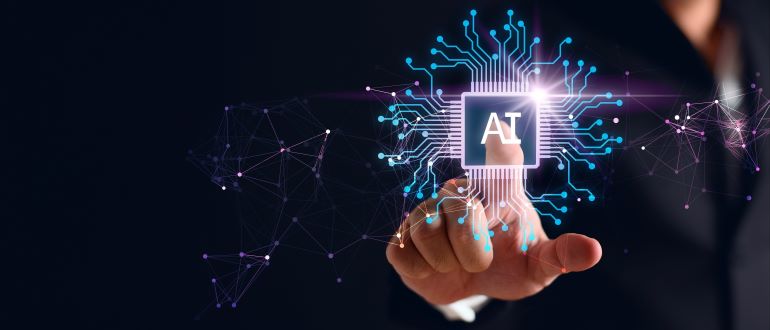AI, Software Architecture and New Kinds of Products

Although AI won’t change the practice of software architecture, AI will make a
big change in what software architects architect. The first generation of
AI-enabled applications will be similar to what we have now. For example,
integrating generative AI into word processing and spreadsheet applications
(as Microsoft and Google are doing) or tools for AI-assisted programming (like
GitHub Copilot and others). But before long, we will be building different
kinds of software. ... Architects will also play a role in evaluating an AI’s
performance. Evals determine whether the application’s performance is
acceptable. But what does “acceptable” mean in the application’s context?
That’s an architectural question. In an autonomous vehicle, misidentifying a
pedestrian isn’t acceptable; picking a suboptimal route is tolerable. In a
recommendation engine, poor recommendations aren’t a problem as long as a
reasonable number are good. What’s “reasonable”? That’s an architectural
question. Evals also give us our first glimpses of what running the
application in production will be like. Is the performance acceptable? Is the
cost of running it acceptable?
The AI Power Paradox

Wellise notes that AI technologies may also help data centers to manage their
energy consumption by monitoring environmental conditions and adjusting use of
resources accordingly. “In one of our Frankfurt data centers, we deployed the
use of AI to create digital twins where we model data associated with climate
parameters,” he explains. AI can also help tech companies that operate data
centers in different areas to allocate their resources according to the
availability of renewables. If it is sunny in California and solar energy is
available to a data center there, models can ramp up their training at that
location and ramp it down in cloudy Virginia, Demeo says. “Just because
they’re there doesn't mean they have to run at full capacity.” Data center
customers, too, can have an impact. They can stipulate that they will only use
a data center’s services under certain circumstances. “They will use your data
center only until a certain price. Beyond that, they will not use it,”
Chaudhuri relates. Though application of even the most moderate of these
technologies is not yet widespread, advocates claim that these experimental
setups may eventually be more widely applicable.
Quantinuum Unveils First Contribution Toward Responsible AI

This research has significant implications for the future of AI and quantum
computing. One of the most notable outcomes is the potential to use quantum AI
for interpretable models. In current large language models (LLMs) like GPT-4,
decisions are often made in a “black box” fashion, making it difficult for
researchers to understand how or why certain outputs are generated. In
contrast, the QDisCoCirc model allows researchers to inspect the internal
quantum states and the relationships between different words or sentences,
providing insights into the decision-making process. In practical terms, this
could have wide-reaching applications in areas such as question answering
systems, also referred to as ‘classification’ challenges, where understanding
how a machine reaches a conclusion is as important as the answer itself. By
offering an interpretable approach, quantum AI using compositional methods,
could be applied in fields like legal, medical, and financial sectors, where
accountability and transparency in AI systems are critical. The study also
showed that compositional generalization—the ability of the model to
generalize from smaller training sets to larger and more complex inputs—was
successful.
Differential privacy in AI: A solution creating more problems for developers?
Differential privacy protects personal data by adding random noise, making it
harder to identify individuals while preserving the dataset. The fundamental
concept revolves around a parameter, epsilon (ε), which acts as a privacy knob. A lower epsilon value results in stronger
privacy but adds more noise, which in turn reduces the usefulness of the data.
A developer at a major fintech company recently voiced frustration over
differential privacy’s effect on their fraud detection system, which needs to
detect tiny anomalies in transaction data. “When noise is added to protect
user data,” they explained, “those subtle signals disappear, making our model
far less effective.” Fraud detection thrives on spotting minute deviations,
and differential privacy easily masks these critical details. The stakes are
even higher in healthcare. For instance, AI models used for breast cancer
detection rely on fine patterns in medical images. Adding noise to protect
privacy can blur these patterns, potentially leading to misdiagnoses. This
isn’t just a technical inconvenience—it can put lives at risk.
Thinking of building your own AI agents? Don’t do it, advisors say

Large companies may be tempted to roll their own highly customized agents, he
says, but they can get tripped up by fragmented internal data, by
underestimating the resources needed, and by lacking in-house expertise.
“While some companies may achieve success, it’s common for these projects to
spiral out of control in terms of cost and complexity,” Ackerson says. “In
many cases, buying a solution from a trusted partner can help organizations
avoid the pitfalls of builder’s remorse and accelerate their path to success.”
AlphaSense has trained its own AI agents, but many companies lack internal
expertise, he says. In addition, organizations may project the development
costs but ignore the cost of ongoing maintenance, he adds. “This is the
largest cost, as maintaining AI systems over time can be complex and
resource-intensive, requiring constant updates, monitoring, and optimization
to ensure long-term functionality,” Ackerson says. Partnering with an AI
provider can give companies access to proven, ready-made agents that have been
tested and refined by thousands of users, he contends. “It’s faster to
implement, less resource-intensive, and comes with the added benefit of
ongoing updates and support — freeing companies to focus on other critical
areas of their business,” he says.
Building an Enterprise Data Strategy: What, Why, How

After completing the assessment of your current data management efforts and
defining your objectives and priorities, you can begin to assemble the data
governance framework by defining roles, responsibilities, and procedures for
the entire data lifecycle. This includes data ownership, access controls,
security, and compliance as well as data consistency, accountability, and
integrity. The next step is to establish the processes and tools used to
manage data quality, which include data profiling, cleansing, standardization,
and validation. Determine the mechanisms for integrating data to create a
seamless and coherent data environment encompassing the entire enterprise.
Data lifecycle management covers data retention policies, archival storage,
and data purging to ensure efficient storage management. The glue that keeps
the many moving pieces of an enterprise data strategy working together
harmoniously is your company’s culture of data literacy and empowerment.
Employees and managers must be trained to recognize the value of data to the
organization, and the importance of maintaining its quality and
security.
Beware the Great AI Bubble Popping

This does not mean that the technology will never make money. Early stages of
evolution in any tech usually involve trying products in the market by making
them as accessible as possible and monetizing the solutions when there's
clarity on use cases, sizable adoption, dependency and demand. Generative AI
will take a while longer to get there. The Great Popping will also lead to the
ecosystem thinning. Startups with speculative or unsustainable business models
will shutter shop as funding decreases. The most likely future scenario is
that the AI landscape will shift to make room for a small number of long-term
players that focus on practical applications, while the rest go bust. Despite
sharing similarities with the dot-com bubble, the residue of the AI one will
likely differ in that entire companies, especially the OpenAIs and the
Anthropics, won't likely shutter completely. They may close down
money-guzzling units, rejigger focus or even pivot entirely, but they are
unlikely to vanish off the face of the earth as their dot-com counterparts
did. Job losses are a likely inevitability, and few firms will hire the
laid-off employees.
Why Jensen Huang and Marc Benioff see ‘gigantic’ opportunity for agentic AI
In the future, Huang noted, there will be AI agents that understand subtleties
and that can reason and collaborate. They’ll be able to find other agents to
“work together, assemble together,” while also talking to humans and
soliciting feedback to improve their dialogue and outputs. Some will be
“excellent” at particular skills, while others will be more general purpose,
he noted. “We’ll have agents working with agents, agents working with us,”
said Huang. “We’re going to supercharge the ever-loving daylights of our
company. We’re going to come to work and a bunch of work we didn’t even
realize needed to be done will be done.” Adoption needs to be demystified, he
and Benioff agreed, with Huang noting that “it’s going to be a lot more like
onboarding employees.” Benioff, for his part, underscored the importance of
people being able to “actually understand” how they work and their purpose,
and “need to get their hands in the soil.” ... Huang pointed out that the
challenges we have in front of us are “many.” Some of these include
fine-tuning and guardrailing, but scientists are making advancements in these
areas every day.
Navigating a Security Incident – Best Practices for Engaging Service Providers

Organizations experiencing a security incident must grapple with numerous
competing issues simultaneously, usually under a very tight timeframe and the
pressure of significant business disruption. Engaging qualified service
providers is often critical to successfully resolving and minimizing the
fall-out of the incident. These providers include forensic firms, public
relations firms, restoration experts, and notification and call center
vendors. Due to the nature of these services, they can have access to or even
generate additional personal and sensitive information relevant to the
incident. Protecting this information from third party or unauthorized
disclosures during litigation, discovery, or otherwise, via the application of
attorney-client privilege and the work product doctrine is essential. While
there is no bright-line, uniform rule about how and under what circumstances
these privileges attach to forensic reports and other information prepared by
incident response providers, recent case law offers guidance as to how
organizations can maximize the prospect that their assessments will remain
shielded by the work product doctrine and/or the attorney-client privilege.
AWS claims customers are packing bags and heading back on-prem
You read that correctly – customers are finding that moving their IT back
on-premises is so attractive compared with remaining on AWS that they are
prepared to do this despite the significant effort involved. Hardly a
resounding endorsement of the benefits of the cloud. AWS also says that
customers may switch back to on-premises for a number of reasons, including
"to reallocate their own internal finances, adjust their access to technology
and increase the ownership of their resources, data and security." In fact,
there have been a growing number of cases of companies moving some or even all
their workloads back from the cloud – so-called cloud repatriation – and cost
often seems to be a factor. ... Andrew Buss, IDC senior research director for
EMEA, told The Register that while cloud repatriation is becoming more common,
"we'd put the share of companies actively repatriating public cloud workloads
in the single digit percentage sphere." Organizations are more likely to move
to another public cloud provider if the incumbent is not meeting their needs,
he said, and they have got more used to the cost economics of public cloud and
can compare it to the long-term costs of running private IT infrastructure.
Quote for the day:
"Without initiative, leaders are
simply workers in leadership positions." -- Bo Bennett
No comments:
Post a Comment